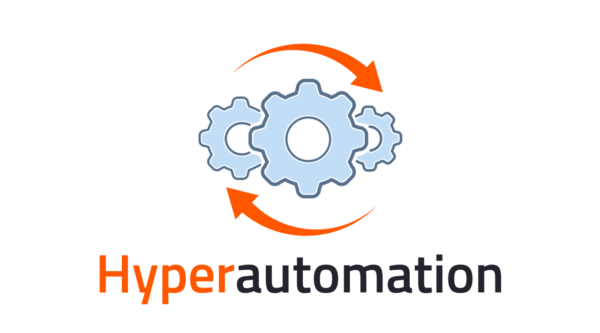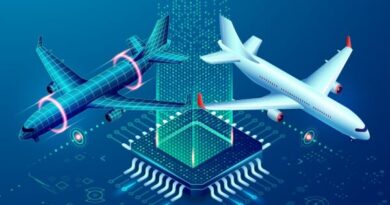Redefining Efficiency: The Power of Hyperautomation in a Changing World
The constantly changing world of modern technology has made businesses increasingly seek solutions to boost productivity while enhancing processes. Enter hyperautomation, a radical advancement that goes beyond regular automation by integrating advanced technologies to tackle complex business operations. So, what is “hyperautomation,” and how is it impacting business workflows?
Hyperautomation: More Than Just Automation
Hyperautomation represents the next generation of digital transformation, merging AI (artificial intelligence), ML (machine learning), and RPA (robotic process automation) to create an intelligent ecosystem. While traditional automation focuses on rule-based tasks, hyperautomation introduces the ability to think, analyze, and even adapt to real-world changes, enabling automation of complex and dynamic processes. This leads to faster execution, fewer errors, and continuous process optimization.
Core Technologies Behind Hyperautomation:
- Artificial Intelligence (AI):
AI is at the core of hyperautomation, allowing machines to make decisions similar to humans. It enables systems to process vast amounts of unstructured data, learn from it, and autonomously improve processes over time. - Robotic Process Automation (RPA):
RPA tools automate repetitive tasks across multiple digital platforms. When combined with AI, these bots do more than simple automation—they intelligently respond to changing conditions, executing more complex tasks. - Machine Learning (ML):
ML systems learn from historical data, predict future outcomes, and continuously evolve through insight development. This scalability enhances processes, making them smarter with every interaction. - Process Mining:
Process mining identifies inefficiencies in workflows by analyzing real-time data. With this insight, hyperautomation determines where automation can provide the greatest benefits.

Why Hyperautomation is a Game-Changer?
- Efficiency:
Hyperautomation transforms mundane, routine work into intelligent workflows. AI-powered systems operate continuously, improving both speed and precision, while freeing human teams to focus on high-impact activities. - Cost-Effective Operations:
By minimizing labor costs and reducing errors, hyperautomation creates leaner, more cost-efficient operations, maximizing productivity through the automation of routine, people-dependent tasks. - Agility and Adaptability:
In today’s uncertain marketplace, agility is key. Hyperautomation systems rapidly adapt to real-time changes, keeping operations fluid, responsive, and ready for any challenges. - Data-Driven Decision Making:
Each task performed by hyperautomation systems generates valuable data. These insights enable businesses to refine processes, optimize further, and discover new opportunities for automation.
Hyperautomation in Action: Industry Applications
- Healthcare:
From automating patient records to streamlining insurance claims processing, hyperautomation is transforming healthcare administration. It’s also being used in diagnostics, helping doctors analyze data faster and prescribe treatments with greater accuracy. - Finance:
In finance, hyperautomation alleviates the burden of routine tasks like financial reporting, risk management, and fraud detection. By executing these tasks more quickly, financial institutions improve precision and responsiveness. - Manufacturing:
Hyperautomation is reshaping the future of manufacturing through automated quality control, optimized supply chains, and predictive maintenance. It reduces downtime, improves product quality, and boosts production rates.
Preparing for a Hyperautomated Tomorrow:
As industries adopt hyperautomation, businesses must be ready for this transformation. Workers will need to focus on higher-value tasks that require creativity, problem-solving, and human interaction, while machines handle repetitive operations. Leaders must embrace a mindset of continuous adaptation and process refinement to stay competitive in this new era.
Hyperautomation isn’t just a technological shift—it’s about transforming how we work. Those who adopt it now will be the industry leaders of tomorrow.
Summary:
Hyperautomation combines AI, RPA, and ML to revolutionize business processes, creating faster, smarter workflows that optimize operations and adapt quickly to an ever-changing market. The future of hyperautomation is already here—are you ready?
FAQs:
- What is the term hyperautomation?
Hyperautomation is the convergence of highly sophisticated technologies which include, but are not limited to, AI, ML, and RPA. Advanced automation forms can be strongly worrisome because they are applied to facilitate complex business processes and may even be considered a plan beyond simple automation in cases in which systems can think, analyze data, and adapt to changes in the real-time environment. - How is hyperautomation different from conventional automation?
While traditional automation is more on repetitive, rule-based activities, hyperautomation is an enhancement of that where AI and ML are used to control complex and dynamic processes. Hyperautomation solutions can gain from data inputs, make informed decisions, and continually optimize how they work, thus making it more efficient and responsive. - Which are the foundational technologies of hyperautomation?
Core technological enablers of hyperautomation are as follows:- Artificial Intelligence (AI): The ability of making systems that replicate the capacities of human decision-making.
- Robotic Process Automation (RPA): Automation of repetitive tasks on multiple digital platforms.
- Machine Learning (ML): Enables systems to learn from previous data and predict possible improvements in the future.
- Process Mining: Discover inefficiencies in workflows by analyzing the process, thereby guiding effective automation initiatives.
- What are the advantages of hyperautomation?
There are many benefits that come along with hyperautomation including:- Productivity Increase: Flattens workflow and reduces manual input requirements.
- Reduced Labor Cost: Minimizes labor costs and eliminates errors, hence cheaper operations.
- More Agility: It gives speed in adjusting to a shifting dynamic of the market.
- Practical use of Data: Generates insights that help in optimizing decision-making and processes.
- What industries can benefit from hyperautomation?
Hyperautomation can be used in any industry. This ranges from:- Healthcare: Optimizing patient record management and improving diagnostic accuracy.
- Financial Services: Automation of financial reporting, risk assessment, and fraud detection.
- Manufacturing: Improving quality control, smoothing supply chain workflows, and predictive maintenance.
- What are some of the challenges organizations may face while adopting hyperautomation?
Possible challenges are as follows:- Hybrid Integrations: Integration of varied technologies becomes complicated and challenging and needs careful execution.
- Problems in Change Management: Employees resist changes in workflow, and thus proper communication and proper training are required.
- Security Issues over Data: Automated systems handle sensitive information and need to be done responsibly.
- How to prepare organizations for hyperautomation?
To better prepare for hyperautomation, organizations should:- Assess Current Processes: Decide which workflows need to be automated and optimized.
- Invest in Employee Development: Train employees to work on more valuable activities involving creativity and analytical thinking.
- Develop a Responsive Culture: Teach the company to innovate and be flexible for continuous technological innovation.
- Is hyperautomation a prerogative of large corporations?
Not at all—hyperautomation is beneficial for organizations of any size. Large ones do have more resources to put into implementation, but small and medium-sized ones can use hyperautomation as well to increase efficiency and optimize processes at relatively low initial investments. - How do staff members and employees react?
Hyperautomation will automate routine jobs and free up the organization’s human workforce for more strategic, people-intensive roles requiring creativity and problem-solving abilities. It may redefine or even eliminate certain jobs, but it will create new career opportunities in controlling and fine-tuning automated operations too. - What are the future prospects of hyperautomation?
Hyperautomation is a bright prospect with continued innovations in AI, ML, and RPA. With even higher recognition of the benefits organizations bring, we expect wider adoption across sectors in line with higher efficiency, innovation, and potential.




